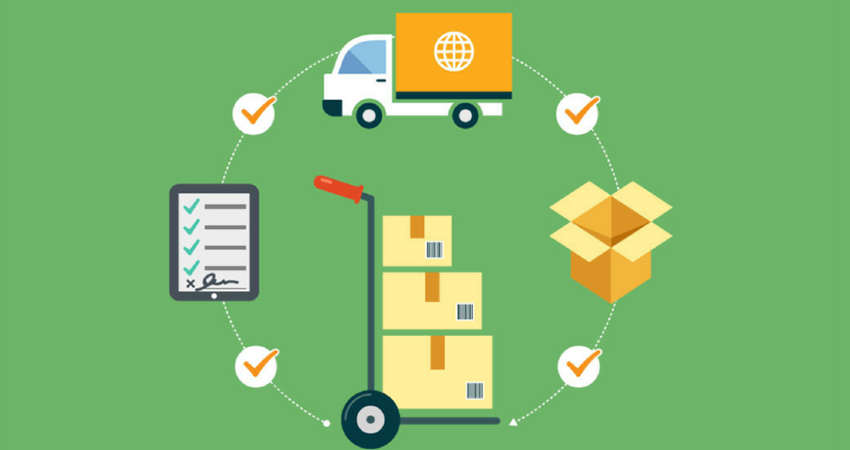It’s challenging to be a direct-to-consumer brand these days. You’re facing mounting margin pressure, loss of brand integrity and rapidly changing consumer expectations. Meanwhile, it feels like every month there’s a new channel you need to be operating in.
But as frustrating as they can be, leveraging these new channels is also worth it. The average Amazon Prime member spends $1,400 a year compared to $600 for a non-Prime member. If you’re in FBA or Seller Fulfilled Prime (SFP), you’re projected to get a 52% lift in sales.
And Amazon Prime is paving the way from programs everywhere. eBay and Walmart are following suit, and you’re probably feeling the pressure to start incorporating Prime-like features on your site as well.
The trend is clear: The internet is getting more complex, and so your order management strategy needs to be as well.
At Ecommerce Operations Summit 2019 in Columbus, OH, David Lengacher, head of data science at MonarchFX, and Michael Anderson, CEO of Etail Solutions, shared these 9 tips for successful order management in an omnichannel environment, including selling on Amazon.
Independently Forecast Each Product Hierarchy Level
When forecasting at a fulfillment center level, everything you do impacts fulfillment downstream. At your lowest level is SKU location, then sub category, category, brand, etc., with each needing its own forecast.
Forecasting independently lets you propagate downstream to get higher accuracy at each level compared to aggregate forecasting.
Reconcile Your Independent and Aggregate Forecasts
If you aggregate from the bottom up, you get a different number than your independent forecasts. Companies normally either trust one or the other, which is okay if you absolutely have to make them match. However, the more accurate strategy is to spread that error around, improving overall accuracy on every level.
Forecasting Model Done, Overlay Human Intelligence
Models can only predict the impact of recurring events; they can’t account for potential changes. Your marketing and fulfillment teams need to step in to finalize your forecasting based on upcoming trends that your model won’t take into account.
Push Finalized Forecast Through to Your Vendor
Set the fill rate for each SKU based on its profit margin and your forecast accuracy. If you have a very good idea of what’s going to happen to a particular SKU, why not have a 99% fill rate for it?
If you have too many SKUs to do it one-by-one, do it on the subcategory or category level. If it sounds like overkill, remember that every ounce you can squeeze from your forecasting helps promote growth long-term.
Drill Down on Best Fulfillment Strategy to Boost Profit
Boost savings by not only choosing the best location to ship from, but also the best method to use for each unique sale. One tool is distributed order management (DOM). Let’s take a closer look at a DOM audit trail:
- An order comes in. First, DOM shows you availability counts by location, as well as the service levels for each SKU at those distribution points so you can see what your options are
- Calculate your shipping costs. By looking at every variable for every SKU, DOM will build a set of the most cost-effective solutions for you
- Find the best solution. You need to make your decision based on total delivered cost, taking into account product costs, fulfillment, overhead, etc. to find the lowest delivered cost within the acceptable timeframe.
- Trigger the workflow to complete the order
When you’re doing thousands of orders, this level of granularity will make a huge difference to your bottom line. DOM is one of a few solutions, so you’re not tied to it. However, that level of optimization should be your ultimate goal for whatever fulfillment system you choose.
Use Advanced Set of Regional Shipping Templates for SFP
If you have two facilities, and all your inventory in one of them, that would be template A and template B; different combinations of the two would be templates C, D, E, etc. You could have 100 templates with just 6 locations.
To do SFP correctly, you should have a detailed set of templates, and toggle them on a SKU-by-SKU basis each time you send Amazon your inventory numbers. If this is done well, you can optimize your SFP performance without over-promising inventory.
Be Realistic About Where You Can Offer SFP
Don’t bite off more than you can chew. Remember, SFP doesn’t need to be nationwide. Turn it on everywhere you realistically can to lift sales, but don’t push yourself nationwide if you can’t handle it.
If you turn on SFP across the country but then can’t deliver, you’re only hurting your bottom line.
Diversify Fulfillment Strategy to Boost Opportunities
When approaching fulfillment, people often have tunnel vision. They pick a handful of generic strategies, while ignoring the true diversity of options available. Don’t be afraid to go outside the box — it will open up many new opportunities in the long run.
For example, getting an Amazon Prime badge but doing SFP yourself is a huge opportunity. You’re able to take advantage of Prime listings, while still having total control and flexibility over your product packaging. This improves everything from product listings to storage fees, and ultimately creates a much higher ROI.
The $64,000 Question if You Go DIY:
Do I have the resources and time to build, deploy, and test this new system while still staying competitive? If so, excellent, but be aware there’s a loss of time and efficiency associated with the building process.

